




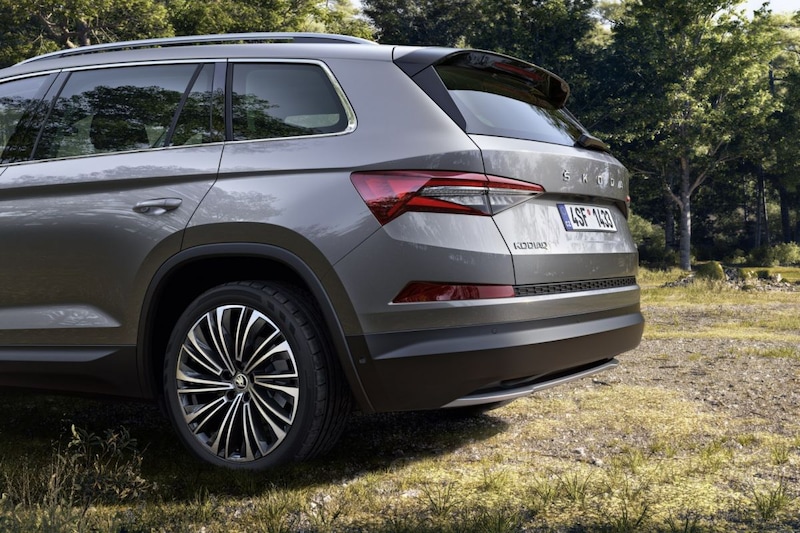





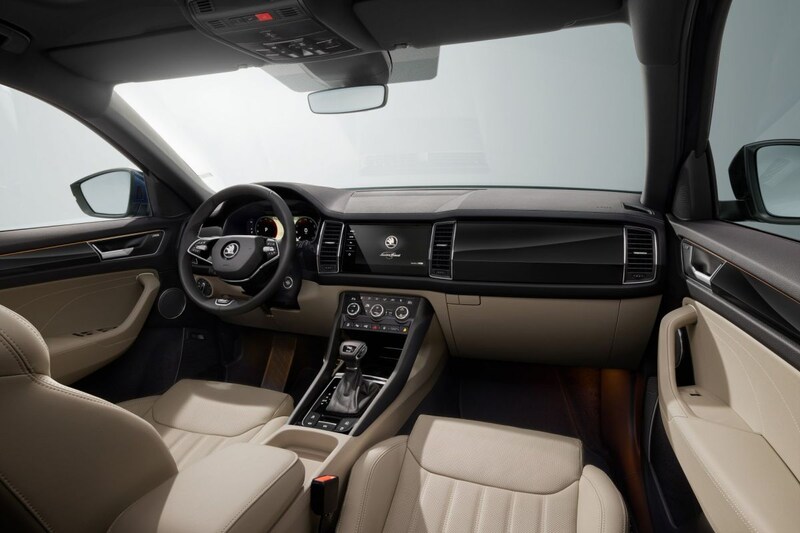
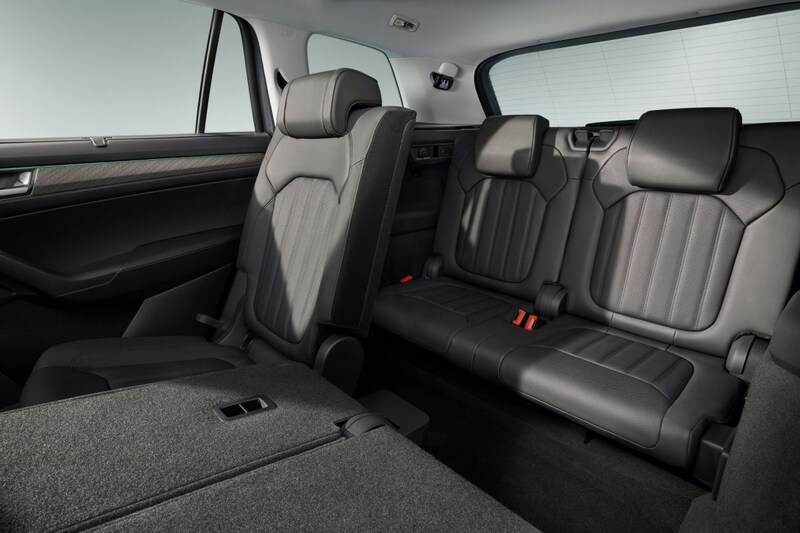

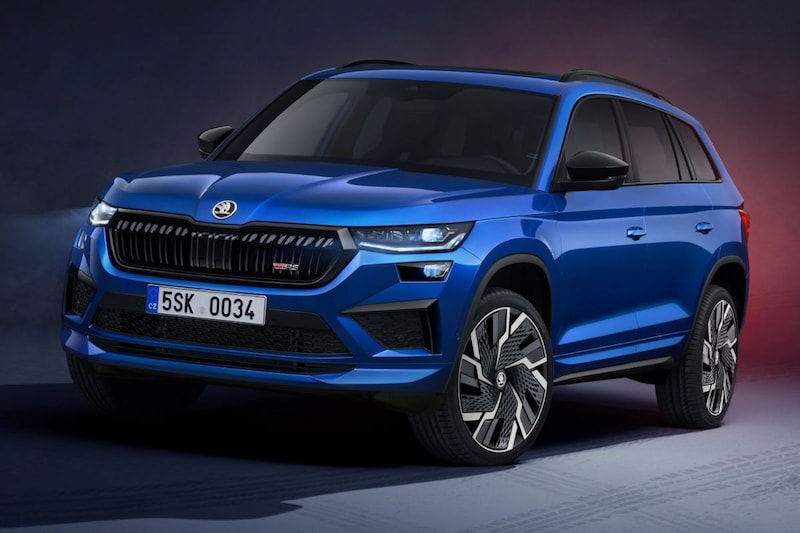
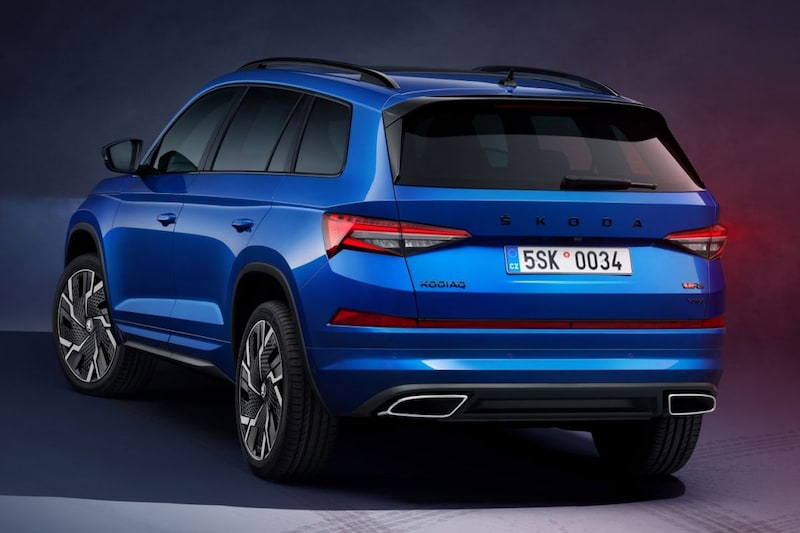
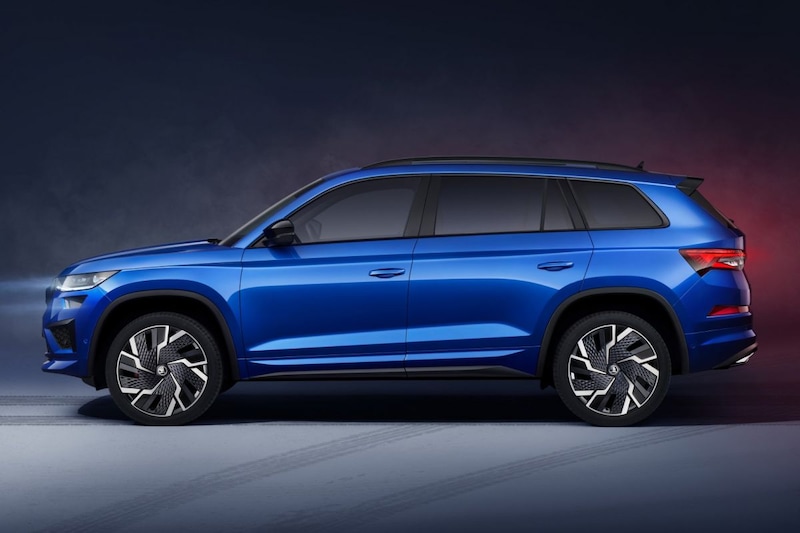
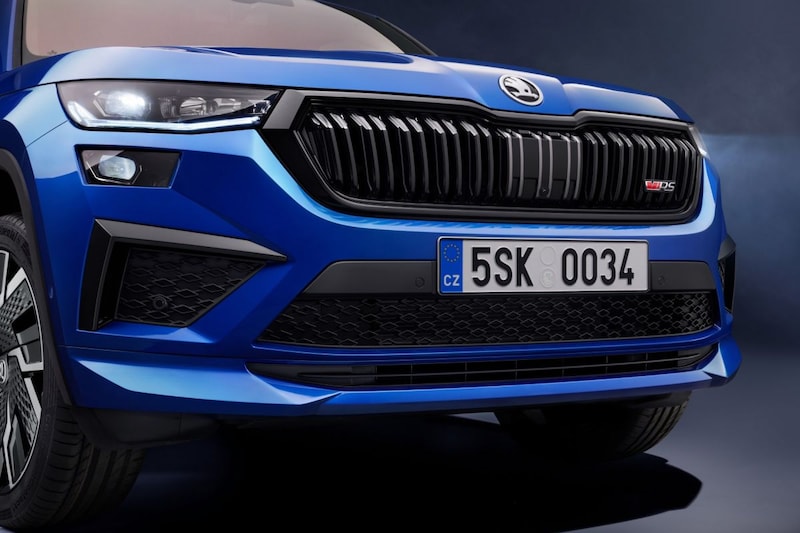
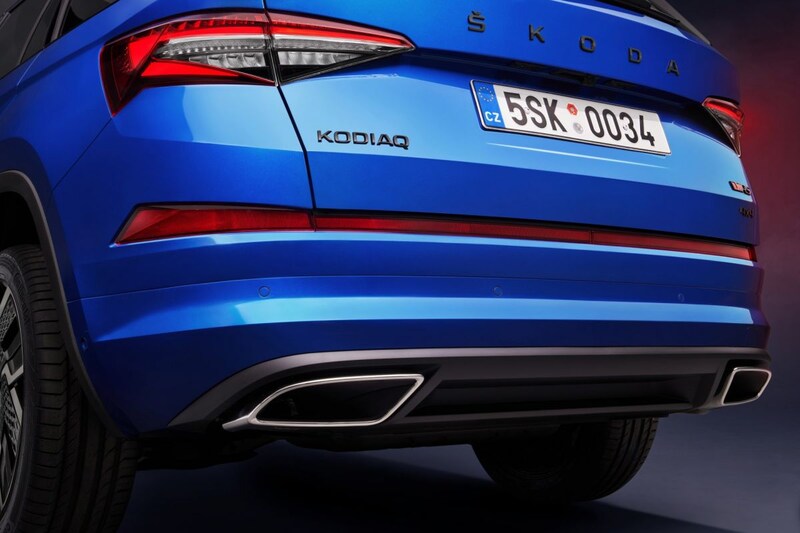
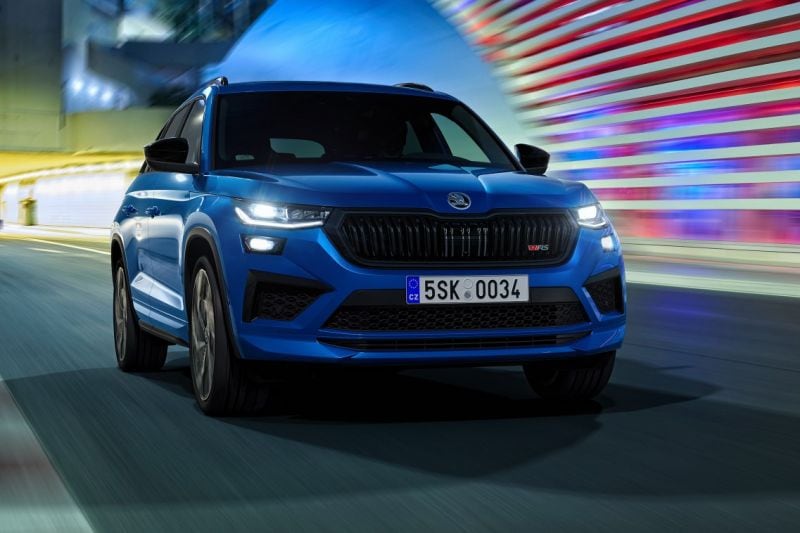


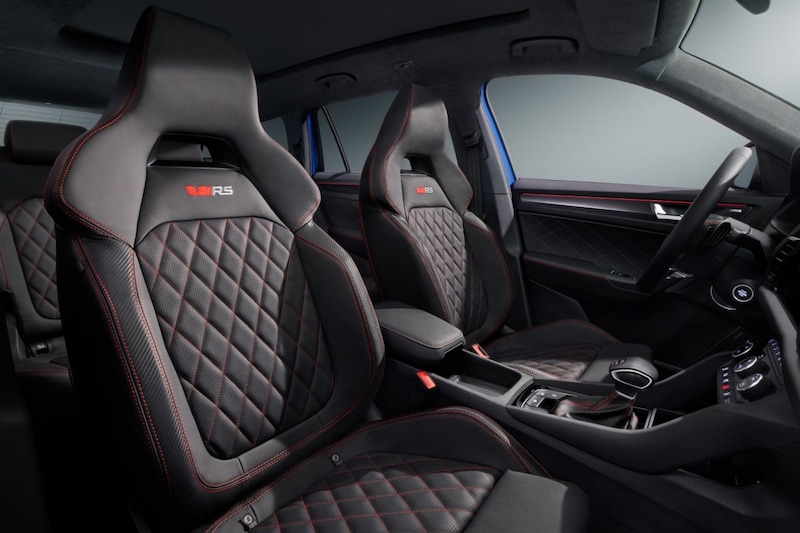
The Kodiaq was Skoda’s first SUV in 2016, which makes the model the oldest SUV of the brand. Time for a facelift. The Kodiaq is being tackled in terms of appearance, but there is also interesting technical news. The RS just returns, but it exchanges its 240 hp diesel engine for a stronger petrol block.
Skoda kicked off its SUV adventure in modern automotive history in 2016 with the Kodiaq, an optional seven-seater vehicle that was later joined by smaller Karoq and Captur competitor Kamiq. It is now being given a facelift more than four years after its market launch. It remains unmistakably a Kodiaq, but there is also big news under the sun.
Design
We start with the appearance. The Kodiaq retains its two-layered lighting, but the light units themselves have been adapted. In addition to the renewed hexagonal grille, which is now also more upright, LED headlights are now fitted as standard. The actual light units are slightly flatter than before. The light unit underneath is the fog lamp, which is also a LED pit on the thicker Kodiaqs. For the first time, the Kodiaq is also available with LED matrix headlights. They are standard on the L&K and RS versions and are optionally available from the Ambition trim level. More news on the Kodiaq front concerns the bonnet, which has been revised and higher on the sides than its predecessor. No facelift without modified bumpers and so the Kodiaq gets them. The lower grille in the bumper has been redesigned and there are now new plastic trim parts on both sides of it. There is now an aluminum-colored part at the bottom of the front and rear bumper.
The rear bumper is renewed in a similar way, but there is more. For example, there is now a longer, black roof spoiler above the rear window. LED rear lighting is now standard, but the units themselves have become slightly thinner, just like the headlights. From the Ambition version, they are now equipped with dynamic direction indicators.
Interior
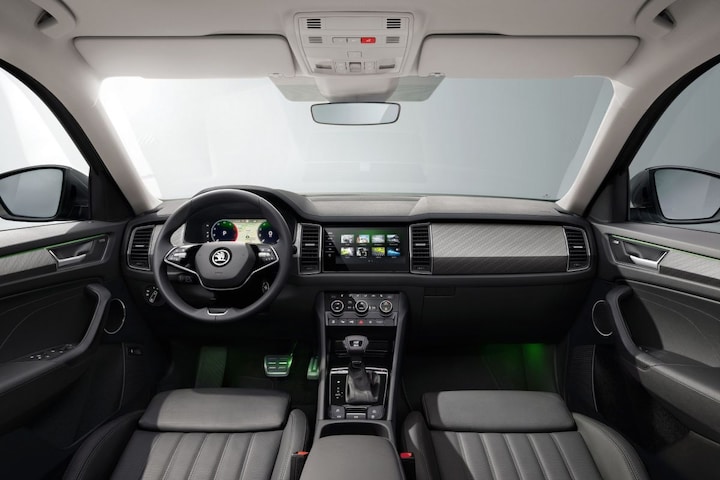
The adjustments to the interior are less radical. Skoda mentions the arrival of new materials, stitching that is visible across the entire width of the dashboard and more extensive mood lighting. In addition, when the driver’s door is open, a Skoda logo is projected on the ground. New are electrically adjustable and, according to Skoda, extra ergonomic seats with memory function that are covered with perforated leather and which, in addition to being electrically heated, also have a ventilation function. From now on there are also ‘eco chairs’, which according to the Czechs are ‘vegan’ and covered with recycled material. Skoda also brings the two-spoke steering wheel introduced in the current Octavia to the Kodiaq. The Sportline and RS versions have a three-spoke version.
Kodiaq RS
The Kodiaq RS is Skoda’s first RS SUV. At the time, that car got a 240 hp and 500 Nm strong biturbo 2.0 diesel engine as a power plant, but that is now the curtain. The facelifted Kodiaq RS gets a 245 hp and 370 Nm strong 2.0 TSI petrol engine, which is also in the Golf GTI. That 2.0 is linked to a seven-speed DSG automatic transmission. The engine change gives the Kodiaq RS a weight saving of more than 60 kilos. It can be recognized from the outside by its sporty and also new bumper work. You can look for a long time for chrome-colored accents, because the SUV is full of black details. The Kodiaq RS stands on 20-inch slippers and comes standard with the Virtual Cockpit and a sporty interior with sports seats and a colorful collection of red stitching. Technical specifications will follow.
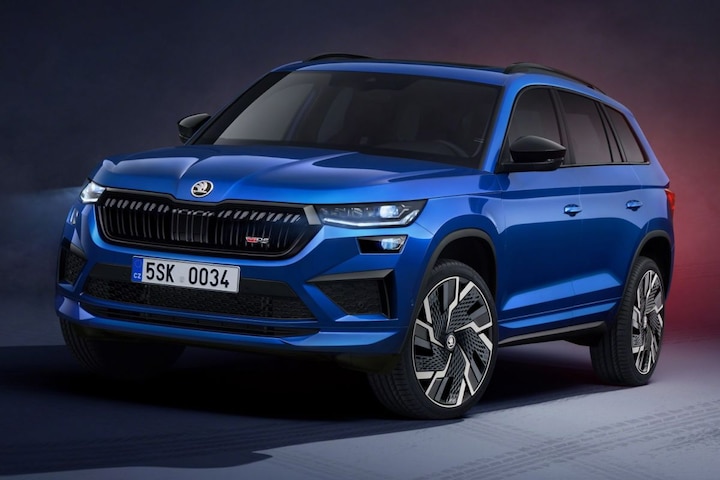
Skoda Kodiaq RS
Don’t need an RS version? That does not have to be a problem, because the Kodiaq also gets milder engines. The Czech is traditionally available with a 150 hp 1.5 TSI that is available with a manual six-speed gearbox as well as with a DSG7 automatic transmission. All other engines have the DSG transmission as standard. The international engine list also includes a 190 hp 2.0 and 2.0 TDIs of 150 hp and 200 hp. Four-wheel drive is also standard for the models with a minimum of 190 hp, including the RS.
The facelifted Kodiaq can be ordered from May and will be available at Dutch dealers in early July. Prices will follow in the run-up to the market launch. Since its launch in 2016, Skoda has built over 600,000 Kodiaqs across four production sites. Mind you, this also concerns the Kodiaq GT, the coupe version reserved for the Chinese market that Skoda produces at its factory in Changsha. In the Czech Kvasiny, with almost 363,000 units, by far the most units were built.